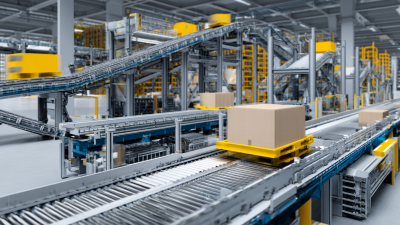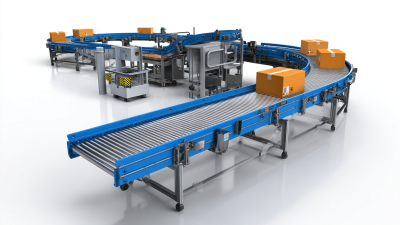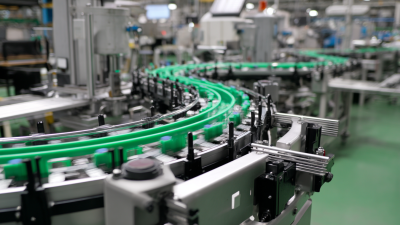The logistics industry is undergoing a profound transformation fueled by advancements in automation, with Conveyor Equipment at the forefront of this revolution. According to a report by Mordor Intelligence, the global conveyor system market is projected to grow at a CAGR of 4.5% from 2021 to 2026, driven by the increasing demand for efficient material handling solutions. As e-commerce continues to rise, companies are seeking innovative ways to streamline operations and enhance supply chain efficiency.
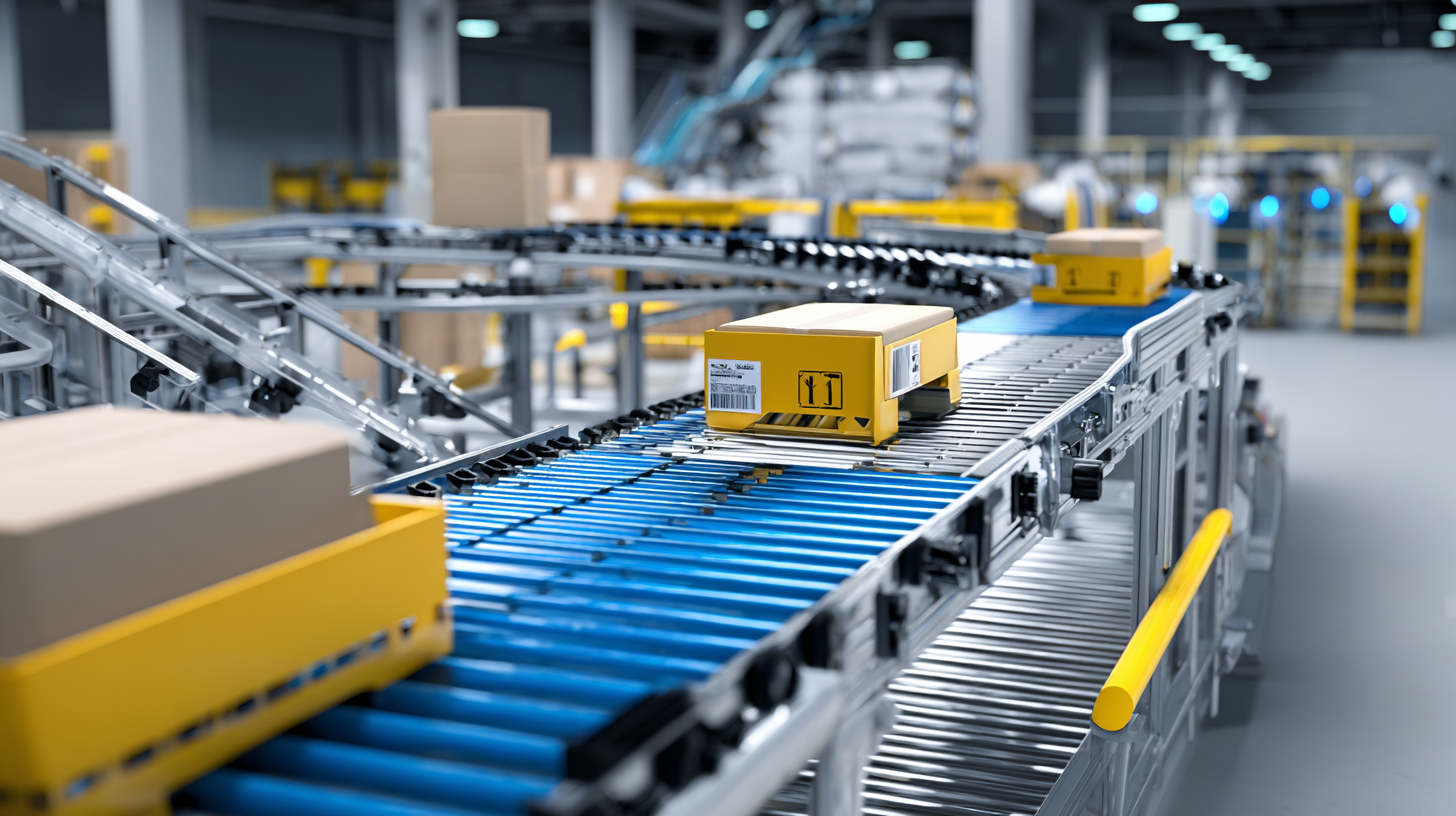
Automated Conveyor Equipment not only accelerates the movement of goods but also minimizes labor costs and errors in order processing. Moreover, Industry 4.0 technologies, such as the Internet of Things (IoT), are being integrated into conveyor systems, enabling real-time monitoring and predictive maintenance. This paper explores the pivotal role of Conveyor Equipment in shaping the future of automated logistics solutions, emphasizing its potential to revolutionize industries through enhanced operational efficiencies.
Conveyor equipment has become a cornerstone in the realm of automated logistics, significantly enhancing warehouse efficiency. These systems streamline the movement of goods, reducing the time and labor involved in traditional handling processes. By minimizing human error and optimizing transport workflows, conveyor equipment allows warehouses to operate at maximum capacity, ensuring that products are stored, retrieved, and shipped quickly and accurately.
Furthermore, with the integration of advanced technologies such as AI and IoT, conveyor systems are evolving into smarter, adaptive solutions. They can now respond dynamically to fluctuating inventory levels and varying order demands, making them crucial in an increasingly competitive market. This adaptability not only improves operational efficiency but also enhances overall customer satisfaction by ensuring timely delivery and inventory accuracy. As industries continue to embrace automation, the role of conveyor equipment will be pivotal in shaping the future of logistics and warehouse management.
| Dimension | Current Trends | Future Projections | Impact on Efficiency |
|---|---|---|---|
| Integration with AI | Increasing use of AI for optimizing routes | More autonomous decision-making processes | Higher throughput and reduced operational costs |
| Sustainability | Focus on energy-efficient conveyor systems | Greater adoption of renewable energy sources | Decreased carbon footprint and improved public image |
| Smart Technology | Implementation of IoT for real-time tracking | Enhanced predictive maintenance capabilities | Minimized downtime and increased reliability |
| Flexibility in Design | Modular systems for easy expansion | Customization based on warehouse needs | Enhanced adaptability and responsiveness |
| Data Analytics | Use of big data for performance insights | Data-driven decision-making | Increased operational efficiency and profitability |
The trend of outsourcing in the pharmaceutical industry is significantly driving growth in global pharmaceutical logistics. By allowing companies to focus on their core competencies, such as research and development, outsourcing logistics helps streamline operations and reduce costs. As the industry embraces this trend, the logistics automation market is projected to reach $81.5 billion by 2033, with a robust compound annual growth rate (CAGR) of 10.20% from 2025 to 2033. This transformation emphasizes the need for efficient conveyor systems in automated logistics solutions.

In addition, advancements in material handling technologies are reshaping the supply chain landscape. By 2034, the global market for pallet trucks alone is forecasted to surpass $33.8 billion, buoyed by warehouse automation and labor shortages. Companies must adapt to these changes by investing in modern conveyor equipment that enhances operational efficiency.
Tips: Implementing advanced conveyor systems can significantly reduce manual handling, thus minimizing errors and time delays. Additionally, staying updated with market trends will enable companies to make informed decisions about their logistics strategies, ensuring they remain competitive in a rapidly evolving industry.
The integration of Artificial Intelligence (AI) and the Internet of Things (IoT) is set to transform conveyor equipment within automated logistics solutions, paving the way for smarter and more efficient operations. By embedding IoT sensors into conveyor systems, companies can collect real-time data on item movement, system performance, and potential bottlenecks. This data, when processed by AI algorithms, can provide actionable insights that enhance predictive maintenance and optimize workflow processes, ultimately reducing downtime and increasing throughput.
Moreover, AI-driven analysis allows for adaptive control of conveyor systems, enabling them to respond dynamically to changes in demand and operational conditions. For instance, if a particular product line experiences a surge in demand, the system can automatically adjust the speed and routing of conveyors to handle the increased volume. This seamless integration not only enhances operational efficiency but also supports more agile supply chains, allowing businesses to adapt quickly to market demands while minimizing waste and operational costs. As industries continue to evolve, the collaboration between AI, IoT, and conveyor equipment will play a crucial role in redefining logistics and supply chain management.
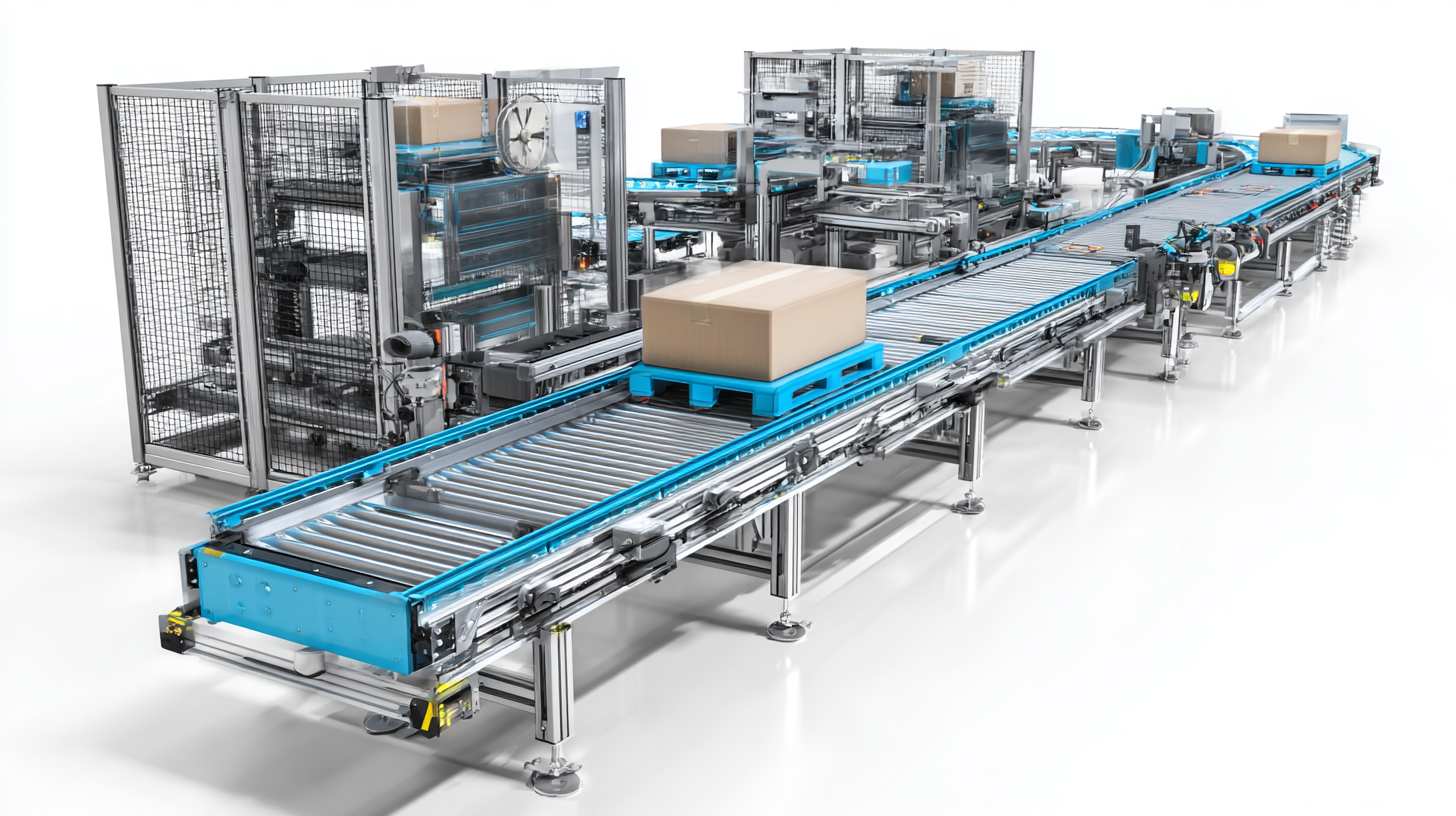
Automated conveyor systems are rapidly transforming supply chain operations, offering significant advantages that enhance efficiency and productivity. According to a report from MarketsandMarkets, the global conveyor systems market is projected to reach $7.3 billion by 2026, driven by the demand for improved logistics efficiency. Automated conveyors can drastically reduce product handling times, enabling faster order fulfillment and minimizing delays—a critical factor in today’s fast-paced e-commerce environment.
One of the key benefits of automated conveyor systems is their ability to optimize space and improve inventory management. By using vertical and modular designs, these systems can maximize warehouse space and create streamlined workflows. A study by McKinsey & Company revealed that companies implementing automated logistics solutions could reduce operational costs by up to 20% while simultaneously increasing throughput by over 30%. This not only leads to cost savings but also allows businesses to meet increasing consumer demands without compromising quality or speed.
The logistics sector is undergoing a transformative shift towards sustainability, powered by advanced conveyor equipment innovations. As companies strive to enhance operational efficiency while minimizing environmental impacts, there is a notable push for greener technologies in automation. The recent opening of innovation centers across Europe highlights the commitment of logistics firms to harness futuristic technologies such as artificial intelligence (AI) and robotics. These advancements are expected to streamline processes, reduce waste, and foster more sustainable practices through innovative conveyor systems tailored for automated logistics solutions.
Moreover, the integration of the Internet of Things (IoT) into conveyor equipment not only enhances real-time monitoring but also facilitates predictive maintenance, ultimately extending the lifespan of the machinery and reducing operational downtime. This focus on sustainability is more than just a trend; it represents a fundamental shift in supply chain management where every component, from conveyor belts to robotics, is designed with efficiency and eco-friendliness in mind. The industry's dedication to these sustainable innovations signifies a future where logistics not only meets consumer demands but also champions environmental responsibility.
